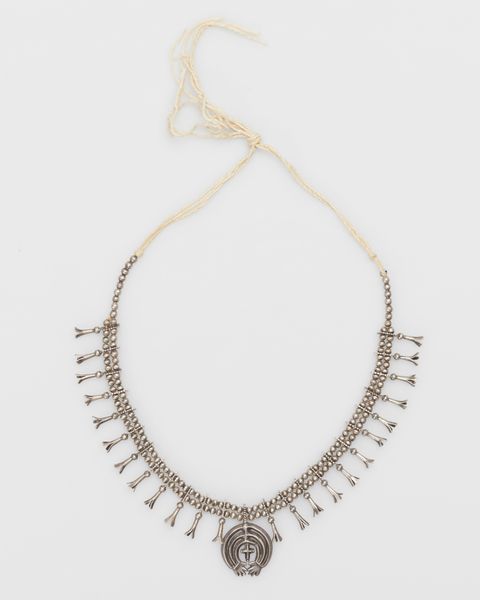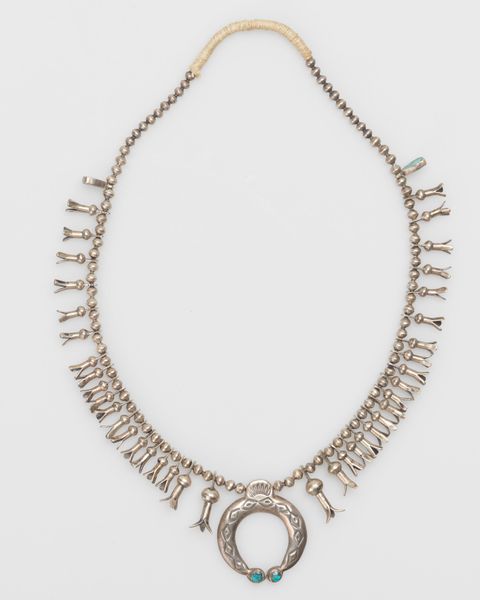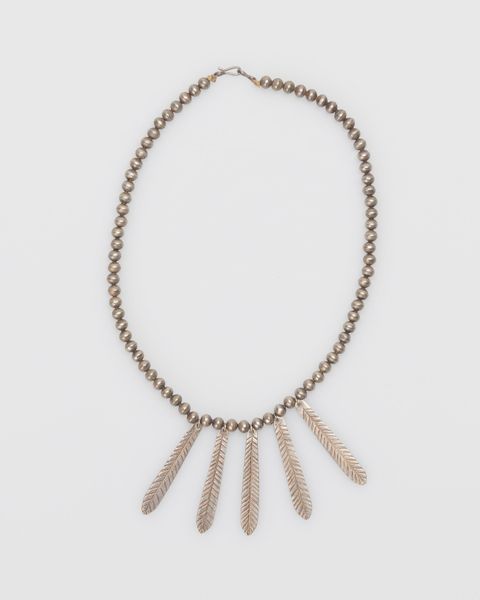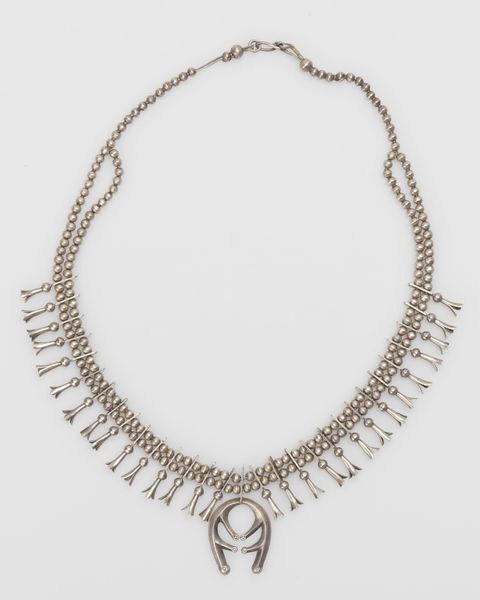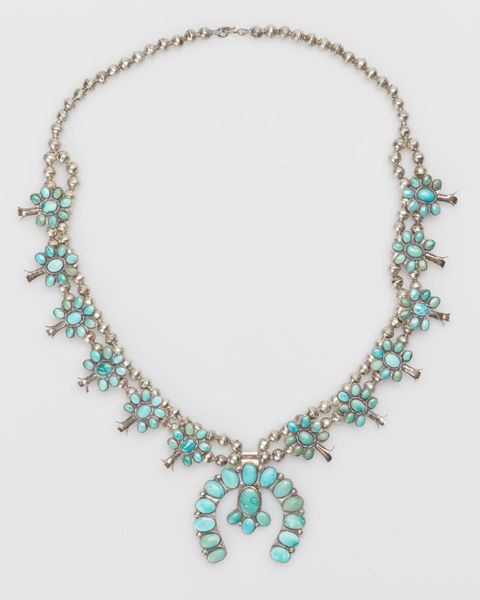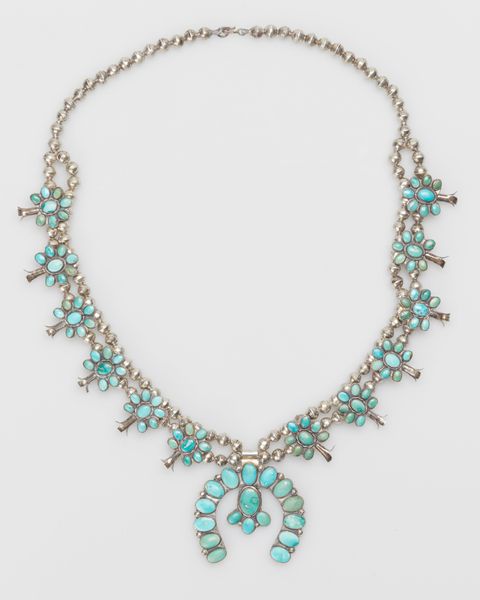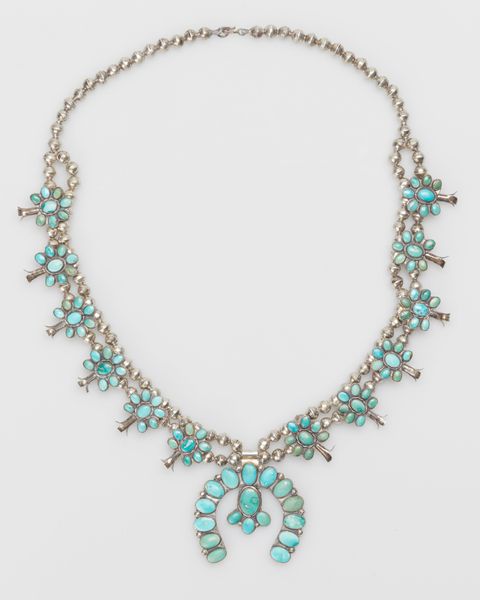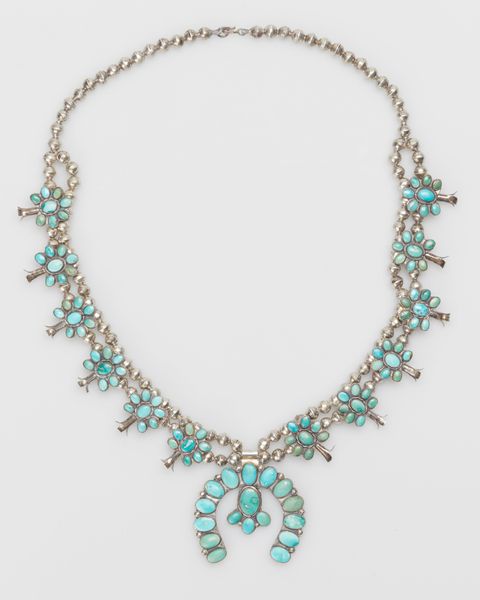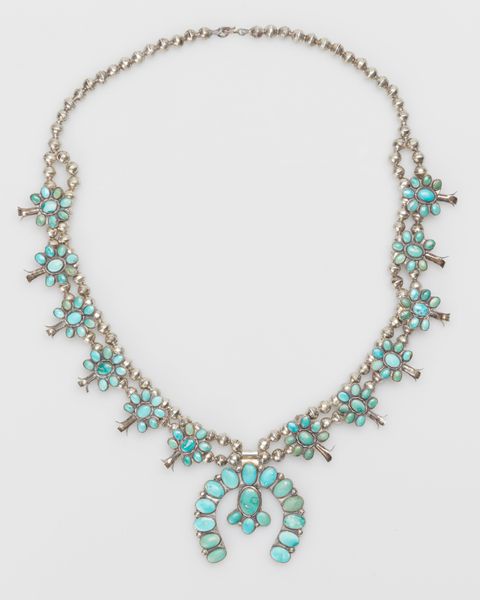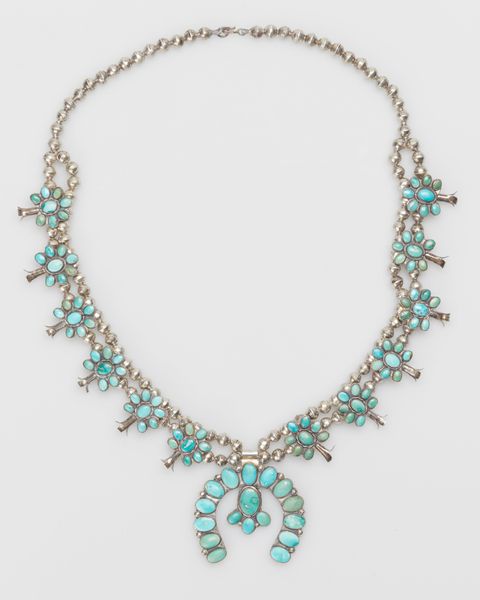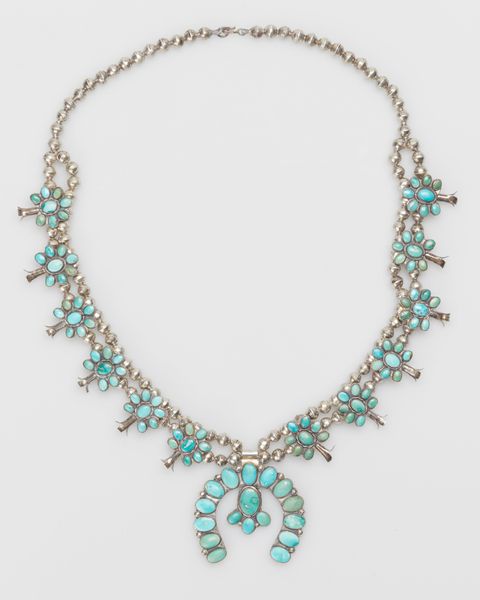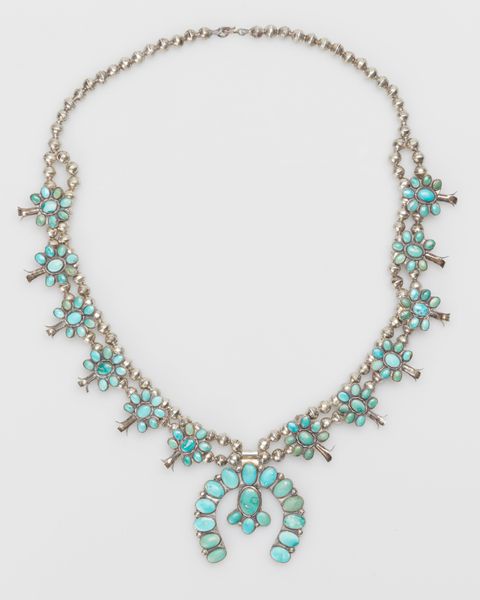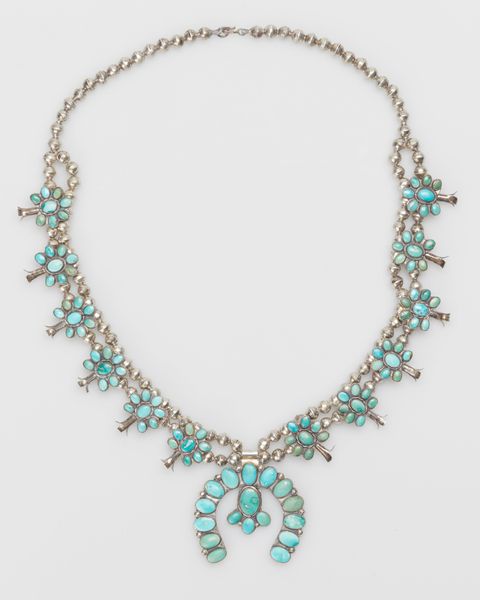
metal
#
art-nouveau
#
metal
#
decorative-art
Dimensions: height 2.9 cm, width 11 cm
Copyright: Rijks Museum: Open Domain
Editor: This is "Collier," a necklace made of metal by Lodewijk Willem van (II) Kooten, created around 1908-1911. It has such a delicate feel, and it makes me think about what its role might have been. What do you see in this piece? Curator: The beauty of this Art Nouveau piece lies in its purpose, really. Jewelry is rarely "just" adornment; it often reflects societal values, class distinctions, and political messages. Think about who would wear this. The craftsmanship indicates a certain level of wealth, but also taste. Was it meant to signify adherence to the aesthetic principles of the time? A statement against industrial mass production? Editor: So, it's not just about looking pretty? Curator: Exactly! Pieces like this emerged in a period grappling with industrialization and mass culture. The art nouveau style, with its emphasis on handcraftsmanship and organic forms, often represented a rejection of those things. It was a political statement in its own right, aligning the wearer with specific cultural and aesthetic values. Do you see how the symmetry contrasts with the fluid lines and swirling details, almost mimicking natural forms? Editor: I see that! And now I am thinking that it’s making a different statement than something mass produced might make. The colour too – the deep purple feels…significant, like it wants to stand out. Curator: It certainly does draw the eye. Precious stones and metals held symbolic meanings. Their presence amplified the social and cultural signaling this piece offered to both the wearer and the observer. It broadcasted her awareness and engagement with contemporary movements and values. Editor: Wow, that changes my whole perspective on the necklace. I was focused on how pretty it was. Curator: Art and design are rarely neutral. Pieces like this force us to ask: whose values are being represented? How does an object shape its world? Editor: It's incredible to think that something so seemingly simple could hold so much cultural meaning. Curator: Precisely! The study of art objects leads to the heart of history itself, a deeper look at who we are and how we represent ourselves.
Comments
No comments
Be the first to comment and join the conversation on the ultimate creative platform.
